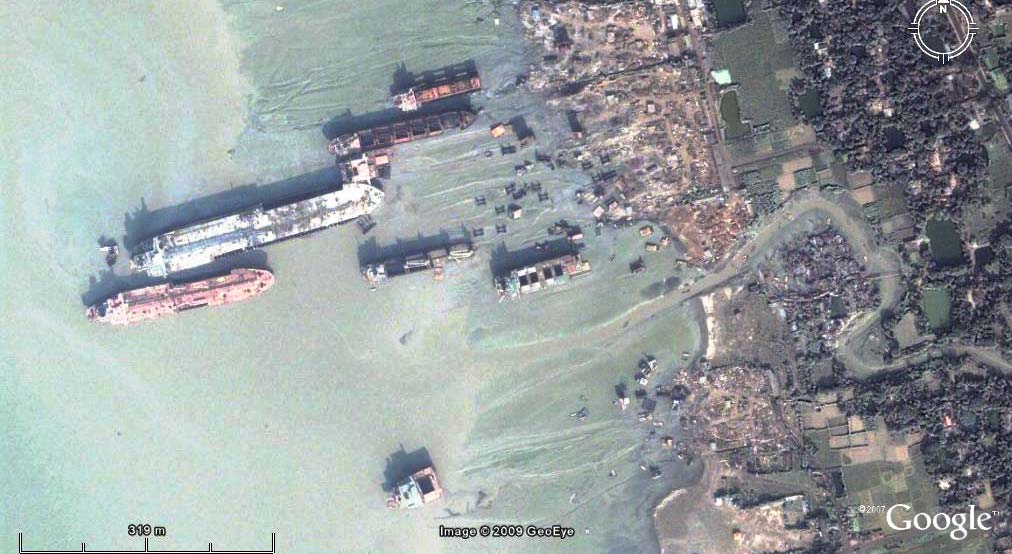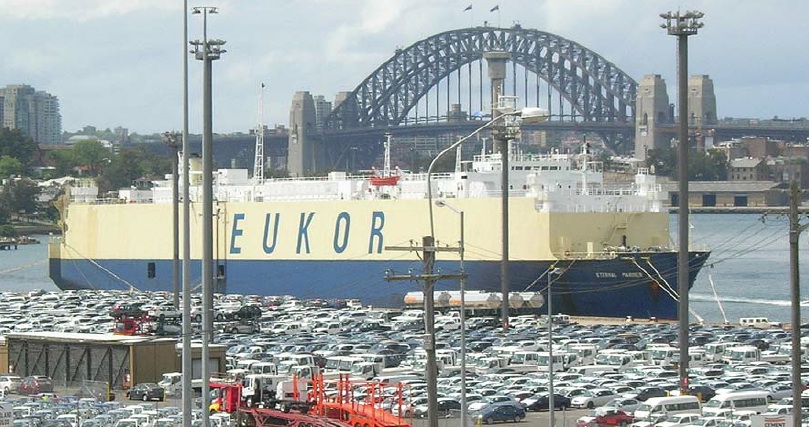Goodbye Bangladesh, hello Philippines?
On March 18th 2009 the Bangladeshi High Court of Justice ordered the closure within two weeks of all ship-breaking yards operating without environmental clearance. Considering the state of all the ship-breaking yards in the country this would mean completely closing down the field. The decision also prohibits the importation of vessels which have not undergone any preliminary extraction of hazardous materials (asbestos, PCBs, heavy metals, hydrocarbons …) To prepare an appeal against this decision the industries obtained a delay of three weeks. In the meantime, the vessels continue to arrive and are beached in Chittagong. We are left to see how this decision will be followed up, the decisions effects and if it will encourage the Bangladeshi government to put standards in place and follow up the environmental and social conditions of ship-breaking or if the demolition market will move elsewhere: due to the crisis the Japanese ship owners have an influx of vessels to be demolished and are pushing the Filipino government to launch into the demolition business.
 Ship-breaking yard, Chittagong (Bangladesh) © Google Earth
Ship-breaking yard, Chittagong (Bangladesh) © Google Earth
Even cars carriers are sent to be demolished
The world economic crisis and the slowing down of exportations continue to decimate the fleets of old container ships, bulk carriers and general cargo ships. Alone these three categories add up to 214 vessels, which represents more than three quarters of the vessels sent to be demolished. In the past few years the tankers represented close to half of the vessels sent to be demolished; this year they tallied only 31 (11%).
Even cars carriers are victims of the crisis. In 2008, only three vessels of this type left the worldwide fleet; during the first three months of 2009 we have already counted fifteen. The Japanese ship-owner MOL Mitsui OSK Lines also announced that they would soon be sending fifteen car carriers more than 25 years old to be demolished they contain asbestos, hydrocarbons and radioactive substances in the smoke detectors.
 Eternal Mariner. October 8th, 2007. Sydney (Australia), Glebe Island berth © Clyde Dickens
Eternal Mariner. October 8th, 2007. Sydney (Australia), Glebe Island berth © Clyde Dickens
The rush continues
From January 1st to April 3rd, 272 vessels (against 288 vessels for all of 2007) have left to be demolished representing a cumulative recycling of more than 2.2 million tons of metal. Even though it slowed down at the end of the quarter the pace of vessels leaving the waters has been stable. During this period, India with138 vessels (51 %), was ahead of Bangladesh 78 (29 %). The abundant vessels offer at the end of their lives allows Pakistan with 28 vessels (10%), China 19 (7%), Turkey 5 (2%) to stay present within the market. The United States have gone back to cleaning up their reserve fleet and sent 4 old vessels to be demolished. Concerning the total of metal to be recycled, India confirm their leading place with more than 1 million tons (49%) ahead of Bangladesh with 764,000 t (34%).
177 vessels (65 %) have previously been detained in harbours worldwide with close to 80 % for bulk carriers and general cargo ships; 87 (32%) were controlled by a non IACS society (International Association of Classification Societies). 100 (37%) were built in the European Union or in Norway ; 106 (39%) were operating under a European flag or had owners from the European Union or the European Free Trade Association (EFTA) of which 44 (16%) were Greek. The Tuvaluan and Saint-Kitts-and-Nevis flags are popular for the last trips.
The age of these end-of-life vessels leaving the waters from the period of January 1st to April 3rd 2009 ranged between 21 and 53 ; the average age was 31 years. 51 vessels were less than 150m in length, 159 measured between 150 and 199m and 62 between 200 and 315 m.
The prices offered by the ship-breaking yards have risen regularly around 50 US $ per ton reaching up to 300 US $ on the Indian sub-continent. In the meantime from the month of March, China gave the signal of a notable decrease in the buying price, quickly followed by India, and later by Bangladesh and Pakistan. In the United States, the prices vary from 4 to 43 US $ per ton. The demolition of Hattiesburg Victory a veteran of the last World War used to provision the United States forces, (see page 29), will cost the American Government 1,016,000 US $.
On the demolition shelves, one will notably remark in particular the ex-Vicky, sadly known in the North of France (see page 6). A former crude oil floating storage unit, the Knock Taggart (see page 5), was sent to be demolished in her current state in India. A reminder that a similar vessel owned by Total, the Serepca 1, was recently emptied of 15 tons of PCB before being proposed for demolition.
Link to the bulletin “Shipbreaking” #15 (English, PDF, 1 Mo, 35 pages)
 Imprimer cet article
Imprimer cet article








